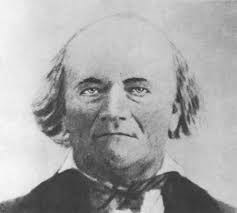Last updated: June 11, 2020
Article
Early Explorers Before George Catlin
Contrary to popular belief, George Catlin was not the first white man to visit the quarries. There were several accounts of people visiting the Pipestone area before 1836, and as early as the late 1600s, Europeans knew of its existence.
Pierre-Charles Le Sueur (1657-1704)
By the beginning of the eighteenth century, there were occasional reports of a location from which the stone originated. In 1700, Pierre Charles Le Sueur, a French trader who defied French trading regulations and traveled deep into areas Europeans had not explored, identified the "Hinhanetons" of the "village of the red-stone quarry." Most probably, he reached the vicinity of what today is the monument and found newly arrived Yankton Sioux. Le Sueur's report was the first evidence that anyone lived by the quarries.
By the beginning of the eighteenth century, there were occasional reports of a location from which the stone originated. In 1700, Pierre Charles Le Sueur, a French trader who defied French trading regulations and traveled deep into areas Europeans had not explored, identified the "Hinhanetons" of the "village of the red-stone quarry." Most probably, he reached the vicinity of what today is the monument and found newly arrived Yankton Sioux. Le Sueur's report was the first evidence that anyone lived by the quarries.

Around September 1, 1832, Prescott, a trader for the American Fur Company, was ordered to proceed to the Big Sioux River country located in what is nowthe state of South Dakota to hunt beaver. After a number of days on the trail with his brigade and family in tow, Prescott located the famous pipestone quarries. He wrote, "The next morning we moved off in search of water, for where we camped water was scarce and the horses could not get enough. About noon we arrived at the famous placed called the Pipestone Quarry."
Prescott and his party blasted the quartzite layer above the pipestone, collecting enough stone to make about twenty pipes. He described the deposit as follows:
"When I was there diggings were about 100 yards long, and at the south end the diggings are about ten feet deep. The pipestone is about a foot thick, but in seams from 1/4 to 3 inches thick; in the deep part of the quarry there is more clay and the pipestone is speckled. Otherwise it has pale, white spots, and some has deeper red spots. And some is as pure red and smooth as marble, and fire does not crack it."
A note at the end of the section of Prescott's journal covering the period from 1829-1833 states that "though [the quarry] is not shown on any map earlier than 1703, records indicate that as early as 1637 Indians living far from the quarry treasured the pipes made from the stone found there." Although Prescott and his party stayed only briefly, they were the first of many traders, explorers, and interested observers to come to the site.
